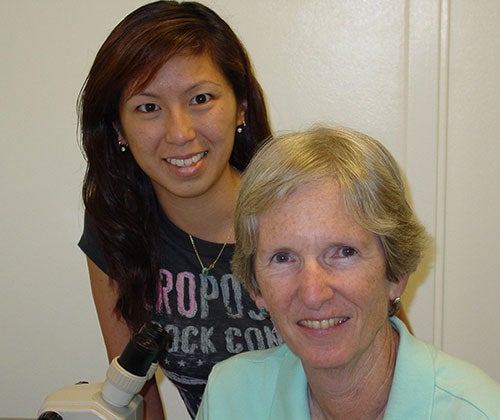Dr. Talbot’s Lab Receives New Grant to Study Human Embryonic Stem Cells
Dr. Prue Talbot, Professor of Cell Biology and Director of UCRs Stem Cell Center, has recently received a new grant from the Tobacco-Related Disease Research Program (TRDRP) to continue her work with human embryonic stem cells (hESC). Sabrina Lin and Nikki Weng, who are graduate students in the Cell, Molecular and Developmental Biology Graduate Program, will be part of the team conducting this project.
Dr. Talbot’s lab is interested in using stem cells to prevent disease. Each year, humans are exposed to thousands of chemicals, most of which have not been evaluated for potential toxicity. Toxicological testing traditionally has used rodent models, and such testing is expensive, time consuming, and requires many animals to collect sufficient data. Moreover, animal data are not always directly relevant to humans, as species differences in response to some chemicals are well documented.
Embryos and fetuses are more sensitive to environmental chemicals and drugs than adults. It is therefore thought that performing toxicological testing on prenatal stages of development will provide the best information for assessing risk of exposure to humans. Clearly experiments can not be done directly on human embryos and fetuses. However, human embryonic stem cells offer us an unique opportunity to model the pre-and post-implantation stages of development, and they provide the best model currently available for toxicological studies on humans.
Dr. Talbot’s lab has been using embryonic stem cells to model pre-implantation development and evaluate the toxicity of environmental chemicals. A recent study from her lab showed that mouse embryonic stem cells are very sensitive to mainstream and sidestream smoke from both conventional and harm reduction cigarettes (Link to Paper). The new TRDRP grant will enable Dr. Talbot’s lab to extend these studies to hESC and characterize their response to both conventional and harm reduction products. It will be important to determine if the harm reduction products produce adverse outcomes with hESC as these products are often marketed as being safer to use than conventional brands, although there is little data to support his claim.
